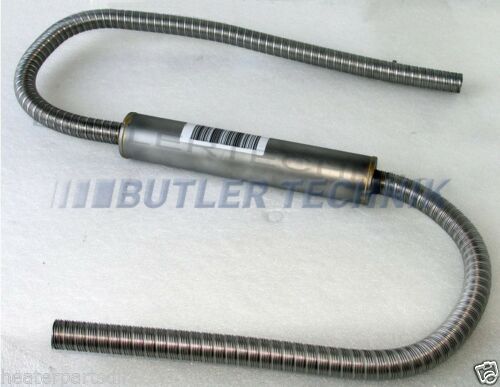-
Posts
61 -
Joined
-
Last visited
Profile Information
-
Gender
Male
-
Location
River Stort
-
Boat Name
Bumblebee
-
Boat Location
River Stort
Recent Profile Visitors
The recent visitors block is disabled and is not being shown to other users.
Patrick_C's Achievements
Engager (3/12)
11
Reputation
-

Guidance for visitors to the Fenland Waterways
Patrick_C replied to Scholar Gypsy's topic in General Boating
Thank you! Much appreciated. -

Guidance for visitors to the Fenland Waterways
Patrick_C replied to Scholar Gypsy's topic in General Boating
Oops. I meant below the sluice (to the north of it - 'above' in a looking at the map sense ). The info about the bus from Ramsey is very helpful, thank you. -

Guidance for visitors to the Fenland Waterways
Patrick_C replied to Scholar Gypsy's topic in General Boating
Hello - Coming to the ML later in the year and would like to get to Woodwalton Fen. What's the maximum length of boat that could turn above the Raveley Drain Sluice shown in the photo? Doable in a 66 ft? Or would it be better to moor up on the Nene or New Dyke and walk in (or bring a smaller boat, for that matter)? -
Yes, to be honest its been a bit of a pain in the neck (interesting that Jabsco no longer make the 'electronic' pumps and have no plans to replace them, apparently) and when it finally gives up the ghost I have a simpler pressure-switch pump and accumulator ready to swap in (at which point the pressure reducer can just be replaced with a simple non return valve). In the meantime, putting the TMV where the pressures of hot and cold will be the same (beyond the reducer) seems to be the way to go.
-
Yes, it's a pressure reducing valve which is needed if you have a Jabsco Sensor-Max or VFlo pump rather than just a non-return valve: see here: https://www.jabscoshop.com/files/USING A HIGH PRESSURE SENSOR-MAX doc550.pdf There is also a PRV (pressure relief valve) on the calorifier.
-
Thanks for all the input and advice - some of the more comprehensive solutions (using multiple mixers and winterising etc) I may return to if/when we do a comprehensive redesign job. On the issue of whether the cold water should be taken off before or after a non-return or pressure-reduction valve, I called Jabsco who in turn called the manufacturer and the advice was to take the cold water feed off *after* the PRV. The reasoning being that it's better to have the hot and cold water being mixed at the same pressure. The effect of any warm water from the calorifier/expansion tank will be insignificant once the pump starts to run and cold water starts to move into the calorifier and the feed into the mixer valve.
-
We've managed with mixer taps on sinks and the shower until now but we now have a small person who will (once lockdown recedes) be visiting so it's really for their safety. After the engine or eberspacher has been running (it cuts out at 85c) the hot water really is hot.
-
Now wondering if the cold water for the mixer valve has to come off the cold supply *before* the non return valve otherwise I'll be mixing hot with the potentially warm backflow from the calorifier into the expansion vessel. Or is it better to have it after the non return valve so it's at the same pressure as the hot water it'll be mixed with? Or does it not matter?
-
This is really useful thanks, especially about the strainer. As for the other bit, I mean that when I've got the £££ I'll get a new and smaller calorifier with the TMV attached directly to it.
-
Hello all, advice please! I want to fit a thermostatic mixer valve to an existing calorifier. At some point it will be replaced with one with an integral mixer. All the installation diagrams I've found show the mixer directly attached to the hot water outlet of the calorifier. However, the current calorifier is in a cramped corner so fitting the valve and running the extra cold water pipe to it will be a bit of a nightmare. Just adjacent to the calorifier I have a nice accessible spot where the cold inlet and hot output run parallel on the 'hot' side of a non-return valve. So, is there any reason not to fit the mixer valve there? All I'd have to do is put a couple of tees into the existing pipework. Advice appreciated - I can't see why putting it at most a metre away from the calorifier would make a difference but you may know different! thanks in advance!
-
We looked at this thread when we were weighing up the options and decided that having no petrol on board outweighed the counter arguments. The other point that is mentioned in passing in the thread is that a generator with petrol in it needs to be stored outside or in a separate locker, while the LPG converted one can be stored more securely inside the boat.
-
That isn't the original, which was like a larger version of the starter alternator. It looks pretty much like the replacement that Beta sent me which (at that time, about 4 years ago) was an Iskra 70A. It means no petrol on board, we can just hook it up to the gas bottles as and when needed. The generator is also mobile (ish) so can be used for jobs off the boat. We used this https://www.sailandtrail.co.uk/lpg-conversion-kit-for-kipor-and-honda-generators.html. We usually use the solar/engine/battery bank via an inverter (Sterling 1600) which is fine for most of the time and will run what we need when cruising (a bigger inverter would probably be pointless with 345Ah of domestic batteries anyway). Out of interest, the generator will manage a full wash cycle (although it gets pretty excited during the heating phase) rather than having to use hot water from the calorifier, which is our usual approach when on the move. Overall our experience of things going kaput or running out at the least convenient moment means that we go for having multiple ways of doing everything if possible - power from engine, solar, generator; water heating engine + eberspacher; space heating eberspacher + stove, etc etc. So the generator is there as a fallback as much as anything.
-
I enquired about these options when we bought our boat and John Lusty at Beta said the same things as have been discussed here. I needed to replace the original alternator as it was cooked. The Beta 38 on the BP boats (which indeed has two alternators, a 70A for domestics and a 35A for the starter, as originally fitted) is not set up for either a much larger alternator or a travel pack without much additional work. We manage to run the washing machine OK while the engine is running via a Sterling inverter. Overall the impression I have is that the BP boat have a combination of engine/alternators/battery bank/skint tanks which are designed to play nicely together - increase the alternator, engine may need work to deal with stresses; replace the engine, the skin tanks may not be large enough ... and so on. I think there was another BP boat similar to ours which the owners 'upgraded' for all year round cruising and they found this caused additional work (NB No Problem? They had/have a blog). Our other option is that we have a Kipor 2.6 Petrol generator converted to run off LPG and that happily runs the washing machine too.
-

Eberspacher air inlet silencer - worth fitting?
Patrick_C replied to Patrick_C's topic in Boat Equipment
On the combustion air inlet I now have the plastic silencer attached via a 20mm pipe of the kind @Flyboy referenced. On the exhaust I have a marine silencer like the one in the picture, which replaced the little non - gas tight one I 'inherited' - they are OK for road vehicles, but not for marine use/engine compartments etc. It's fully lagged. -

Eberspacher air inlet silencer - worth fitting?
Patrick_C replied to Patrick_C's topic in Boat Equipment
When my current Eberpacher (with the integrated pump) shuffles off this mortal coil I think I may replace it with one with an external pump - particularly as the most common job I seem to do on it is hoking gunge out of the little filter in the pump assembly and this involves unmounting and dismantling the unit. But it would also allow me to do this. For now I console myself that the clonking shows that the pump is working ...



